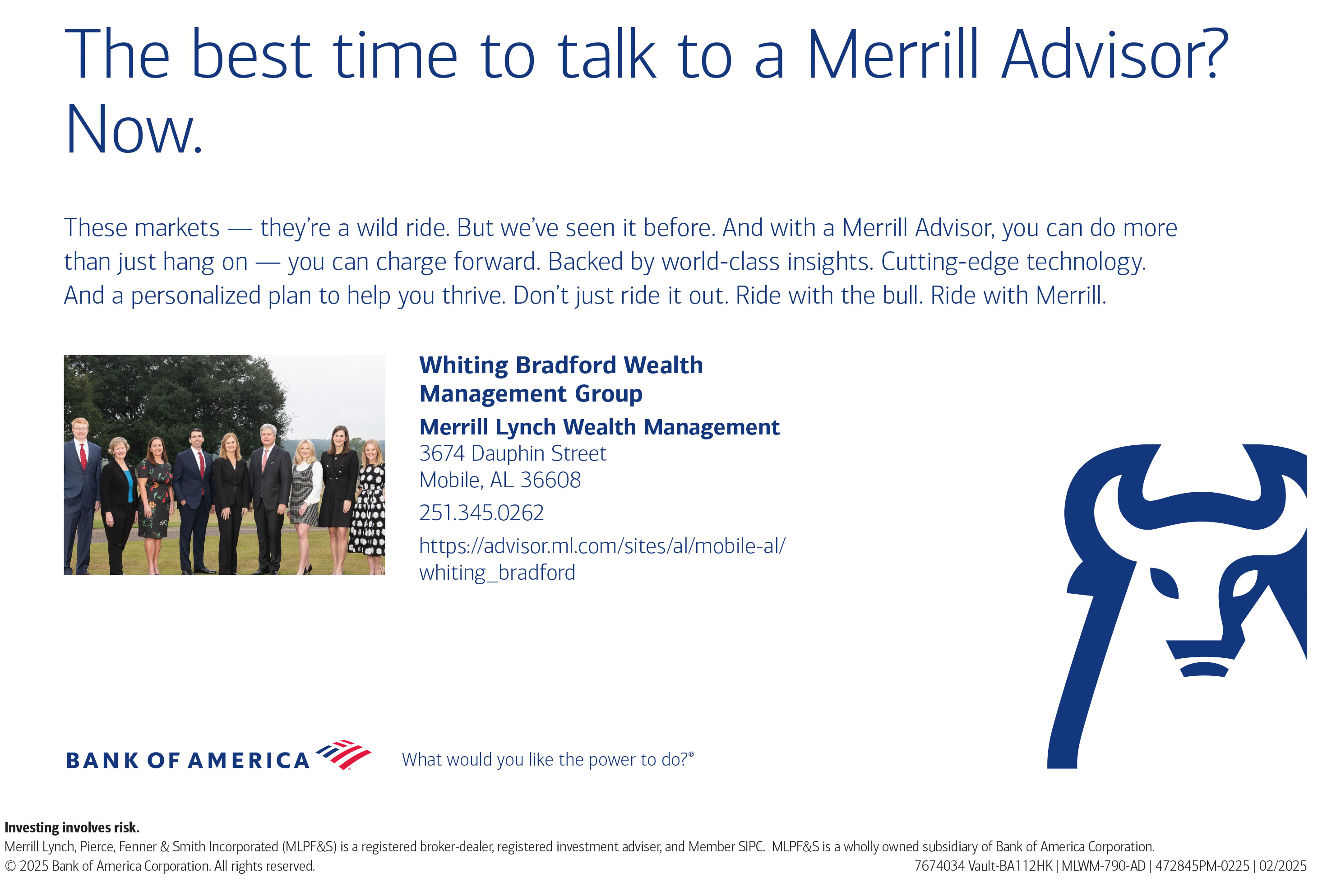
You may not be familiar with the history of downtown Mobile, Alabama. It was the center of activity where businesses, hotels, and restaurants thrived. It was and still is the center of city and county government. I was a kid when my parents would take us to Contstantine’s Restaurant at 80 St. Francis Street after church or the lunch counter on the corner of Bienville Square at Dauphin and North Conception Street during Mardi Gras.
These are some of my fondest memories as a child. Then suburbia hit, and many of these places either closed or moved, resulting in a fairly lifeless downtown except for the remaining law offices, financial institutions, and government offices. My brother, who studied architecture at Georgia Tech, wrote his senior thesis in 1971 on the redevelopment of Dauphin Street - that is how deserted downtown Mobile had become. Throughout the 1980s and early 1990s, the area consisted of vacant boarded-up buildings and a smattering of restaurants.
An old saying is, “You can’t have a great city without a great downtown.” In 1990, then-Mayor Mike Dow decided he needed to do something to bring Downtown Mobile back. He formed Main Street Mobile as a department of the City. He had a vision for Mobile’s downtown redevelopment he called “The String of Pearls Vision.” To start, the city began revitalization by removing dilapidated buildings.
In the mid-90s, Mayor Dow invested in some street scaping, added some decorative lighting along the sidewalks and trees, and redirected traffic so there was more parking and was more pedestrian friendly, but there wasn’t anything to attract the people. In 2004, the Mayor had Main Street Mobile survey the downtown Mobile stakeholders, who still considered downtown dirty and dangerous. It really wasn’t, it was just dull.

Downtown business leaders said, “It’s time for the downtown business community to step up.” In 2005, property owners in the eastern third of downtown formed the Downtown Mobile Business Improvement District. The Mobile City Council then authorized the non-profit Downtown Mobile District Management Corporation to manage the district.
A year later, that organization launched the Downtown Mobile Alliance, a membership-based non-profit open to all businesses within the Henry Aaron Loop. Together with Main Street Mobile, the three organizations create a coordinated effort to support the revitalization of the entire downtown through economic development, marketing, and advocacy initiatives.
The Downtown Mobile Alliance has been going on for nearly 18 years now, and Carol Hunter joined on day one as the Director of Communications. “We got to work,” says Carol, “and the transformation began to take place.” She goes on to say, “Absent a single private investor that is willing to make a transition possible, you must have an organization whose primary focus is on downtown redevelopment. Without the support of the property owners to invest in this revitalization goal, it might never happen at all.”
The Downtown Mobile Alliance team has been together for a long time, and its accomplishments are visible everywhere you go. Elizabeth Stevens serves as President and CEO and was the Director of Main Street Mobile for the City of Mobile before the Alliance was formed. Her impact on the revitalization of downtown over the past 33 years cannot be overstated.
Carol is a summa cum laude graduate of the University of Georgia School of Journalism and Mass Communications. She had worked in television as an investigative reporter and anchor in several Southeast markets before landing in Mobile. She left the world of television in 2000 to help organize Mobile’s very successful Tricentennial celebration. Wherever you go throughout Mobile, especially downtown, you will find Carol’s unselfish time, talent, and treasure at almost every event, charitable board, or creative element to be found. To say the least, she is amazing.
“One of the most visible things we do is the cleaning and beautification of the streets downtown, paid for by the property owners,” she says. The District Management Corporation's annual assessment of the property owners based on fair market value is the primary source of funding for the work of the Downtown Mobile Alliance. It’s not optional to belong. You are a member if you own a commercial property in the district. “The beauty of this system is that everyone who pays benefits, and everyone who benefits pays.”

“It’s amazing that we were formed through a petition process with a majority of property owners agreeing to a mandatory annual assessment,” she says. The property owners didn’t want to pay for the services that the City of Mobile was already paying, so a baseline budget was established, and the District Management Corporation pays for things above and beyond what the City covers.
Teams sweep the sidewalks and gutters in the 77-square blocks and maintain over 200 flower beds within the District. The Alliance has an “Ambassador Service” that reports if there are issues that need to be addressed. In addition, the Downtown Mobile Alliance staff includes marketing and events specialists and economic development and business management specialists to keep work flowing. There are 13 employees under contract to keep the streets looking clean and bright.
The result is 17 years of progress. There are 57 restaurants now, up from 20 when the Alliance was first formed. Hotel rooms downtown have increased by 64%. Since they began, more than 700 residential units have been added to the downtown area, many of which are located in old warehouses and historic buildings converted into interesting living spaces.
Businesses have returned to downtown again. There is a tech sector along St. Francis Street anchored by two innovation centers and co-working spaces enhancing the entrepreneurial spirit. The Alabama Historic Tax Credit has boosted much of the renovation downtown, bringing businesses back and preserving the beautiful architecture.
Places like Barton Academy have been given new life as a new magnet middle school, with over $14 million in donations, and a new title, Barton Academy for Advanced World Studies. The old Merchants Bank building is now residential lofts and the old Red Cross building is now home to Crown Hall event space, Bay Gourmet catering, The Container Yard coworking space and residential lofts.
So far, the Alabama Historic Tax Credit has spurred the renovation of 42 buildings and $130 million in private investment in downtown Mobile, not including the waterfront commerce. There is an energy that hasn’t been felt in fifty years. Economic development is underpinning the transformation. “The first step was to stabilize and improve property values,” says Carol. “Our core purpose is to improve the downtown business, residential, and artistic life vitality.”

The transformation isn’t complete. In 2012, the Downtown Mobile Alliance hired one of the world’s leading architects and urban planners, Andres Duany (DPZ) from Miami, to develop a “form-based code” type of zoning that allows multiple uses in a building but focuses on the building’s relationship to the street. The emphasis is on the pedestrian environment and experience. “If you get it right for the pedestrian, you get it right for everyone,” says Carol.
In 2020, the Alliance paid for a street optimization plan for every street in the downtown district. The purpose is to have a safer and economically productive downtown. “The City is implementing that plan as we speak.” She goes on to say, “We look at the small things, like planting flowers.” They are working with Downtown Parks Conservancy on the revitalization of Bienville Square. Issues of safety are always a primary concern and point of emphasis.
The Downtown Mobile Alliance is heavily involved in bringing events downtown. “Events are great for attracting people, which is good for the businesses in our district. We do a lot of promoting and love bringing in big family events during holidays,” she says. “We target events that help our members.”
Public art is a big focus. “Every year, we commission a major public art project. Last year we worked with the Arts Council to have artists paint 22 signal boxes that add color and interest to our streets.” One example is the mural of E.O. Wilson, the famous sociobiologist from Mobile, painted on the side of the Athelstan Club.
Carol quickly adds that there is still a lot of work to do. “We have come so far in 17 years. We hear from people who are amazed at the transformation that has taken place. We see the progress and see that there is still so much to do.” Carol sees a youth movement of young professionals that want to live and work in downtown Mobile. “They have almost everything they need at their disposal. It wasn’t long ago we couldn’t say that.”
In closing, Carol said, “I think we can be the downtown that a lot of people envision us to be. We can be the downtown that other cities want to be.” I agree. It’s been a long journey to get where we are today, but Mobile’s downtown is once again a vibrant, exciting entertainment district for businesses and residents alike.
The Scenic 98 Coastal community is fortunate to have people like Carol Hunter and the team at Downtown Mobile Alliance hard at work making it happen. The future is indeed bright!































